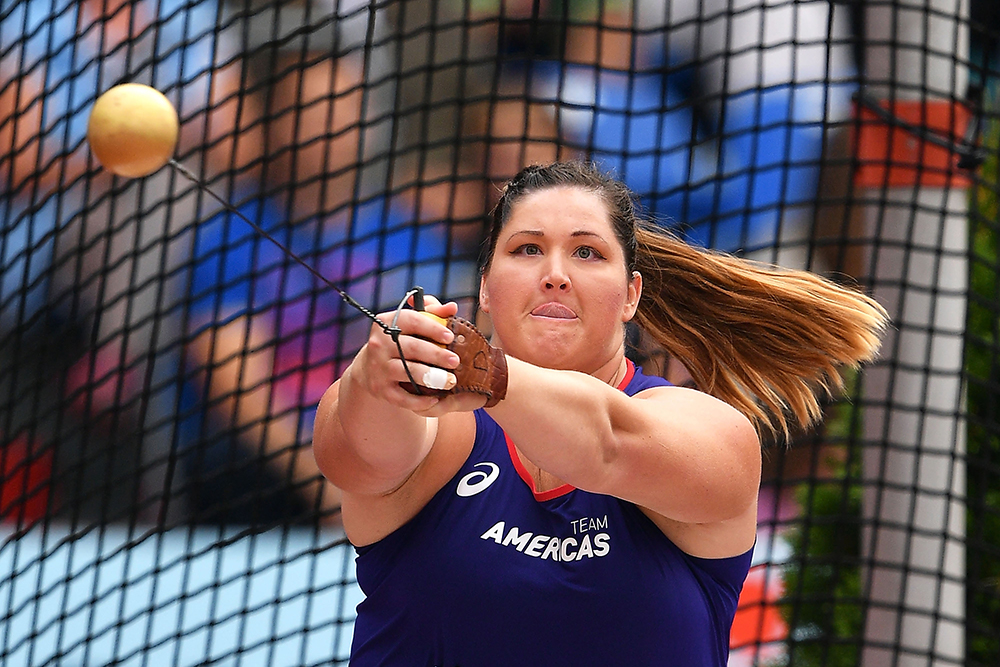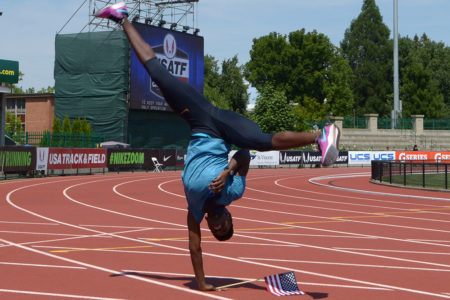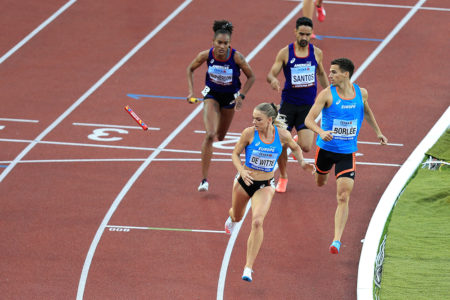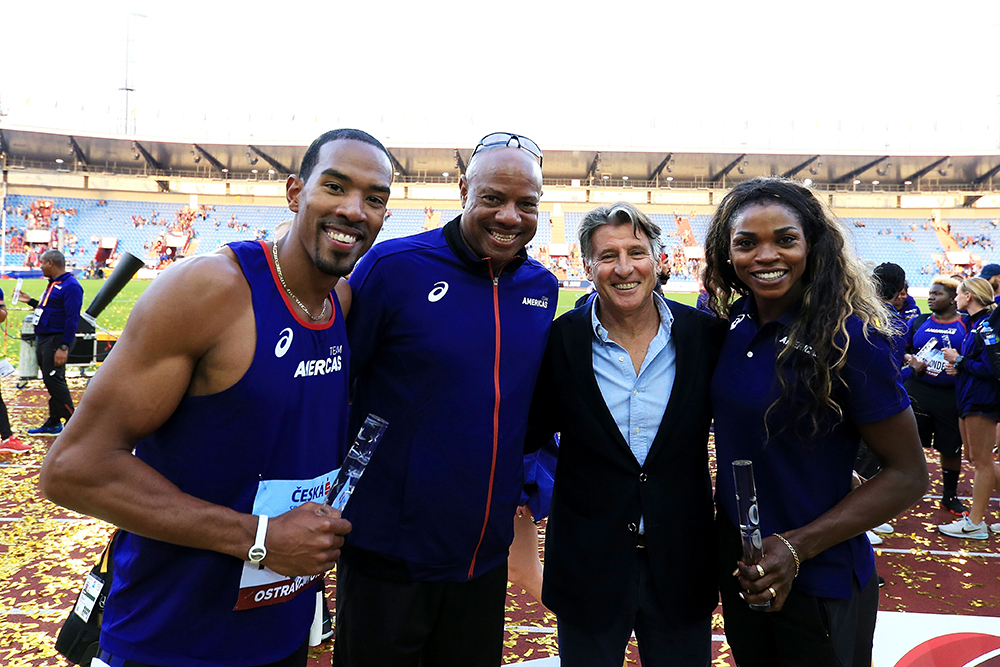
As part of its end-of-summer swing through some major European meets, including the Brussels DL, the Track & Field News Tour took in the new-format Continental Cup. Reaction to the affair was mixed. While no one found the meet to be the perfect change-of-pace gathering to track & field’s customary presentation, a good number liked many of the aspects of the team-oriented event while a few old-schoolers found little to embrace. A sampling of their opinions:
Joan Stratton (Zephyr Cove, Nevada)
I thought the excitement as you went from round to round in the field events was a lot of fun. Starting over had its points in terms of putting pressure on the athletes and encouraging the fans to root as the event progressed. So that was a lot of fun. On the track I loved the devil-take-the-hindmost mentality. They didn’t take out the athletes that were likely to win, but it added a second contest into the race at the back of the pack as well as at the front. And that is always fun to watch.
Paul O’Shea (Fairfax, Virginia)
There were a couple of things I really didn’t like. I don’t like the devil-take-the-hindmost approach because if a person is good enough to make a Continental team, he or she shouldn’t be dragged off the track. We could have missed a couple of PRs from the athletes who were eliminated. I didn’t like the mixed 4 x 400 relay because it put some teams in jeopardy right from the start and the concept is absolutely antithetical to those of us looking for a great anchor leg, a great finish. And hence, it certainly didn’t happen. At the end we had 4 teams each about 50m apart and it was absolutely pitiful. The men’s and women’s 4 x 400 relays are always superb. I thought the mixed concept was a big mistake. I think in general it was a really good meet.
Bob Jarvis (Sacramento, California)
The entertainment did offer a different level of competition in that we did not count the first 3 attempts in the field events other than to eliminate your own teammate. When you advance to the finals, the weakness in that is they were committed to advance a representative from each of the 4 continental groups. And they leave behind athletes who have scored much higher. The idea of going head-to-head in the fourth and fifth rounds is nice. It’s not that complicated. I’m not certain that it should be limited to one throw, however. It might be better to have one throw in round 4, but then in the final round to have the better of 2 so you don’t have those big voids where the odds-on favorite is in round 5 and they lose to an inferior foe. So I would give consideration to extending to the final the better of 2. When the first athlete has fouled, the last participant doesn’t really put much into it. On the running side of it, the devil take the hindmost didn’t work in all but one event. The men’s 3000 did work as they sprinted in the homestretch. They ran a fartlek-type workout. They have to work on that.
Gregg Larson (Rockford, Illinois)
First of all, overall I liked the Cup in that the competition was still really good. There were a lot of good performances out there. On the negative side, I thought it was really quirky. It kind of blew my mind to see these guys in the long distance races sprinting to the finish line to avoid being in last place and then as soon as they dropped the last guy everybody started going really slowly. It looked like everybody was doing fartlek maneuvers to me. For Paul Chelimo, that would be great because he does that anyway. But we had the whole field running like that which I thought was kind of strange. The field events—the way they were dropping people—kind of reminded me of match play in golf as opposed to medal play. You could have the best throw in a throws event and not win overall. That was quirky, a little different. Overall, I liked it because it was different. I would not want a steady diet of that day. As a traditionalist, I would want a steady diet of the customary format. But as an aberration, this was pretty cool.
Keith Ottoson (Prior Lake, Minnesota)
While my wife greatly enjoyed the different format, I am a track & field traditionalist and had issues with several aspects of the meet. I didn’t care for the elimination aspect of the distance races or the knockout rounds in the throws and the horizontal jumps. The changes reminded me of playing games with my young grandson who often makes rule changes in the middle of a game so he can win. What’s next? Will the meet’s final event—the mixed 4 x 400 relay—be worth a zillion points to keep the team race exciting until the end? Will lagging racers in the 1500 be forced to clear steeple barriers in the final laps?
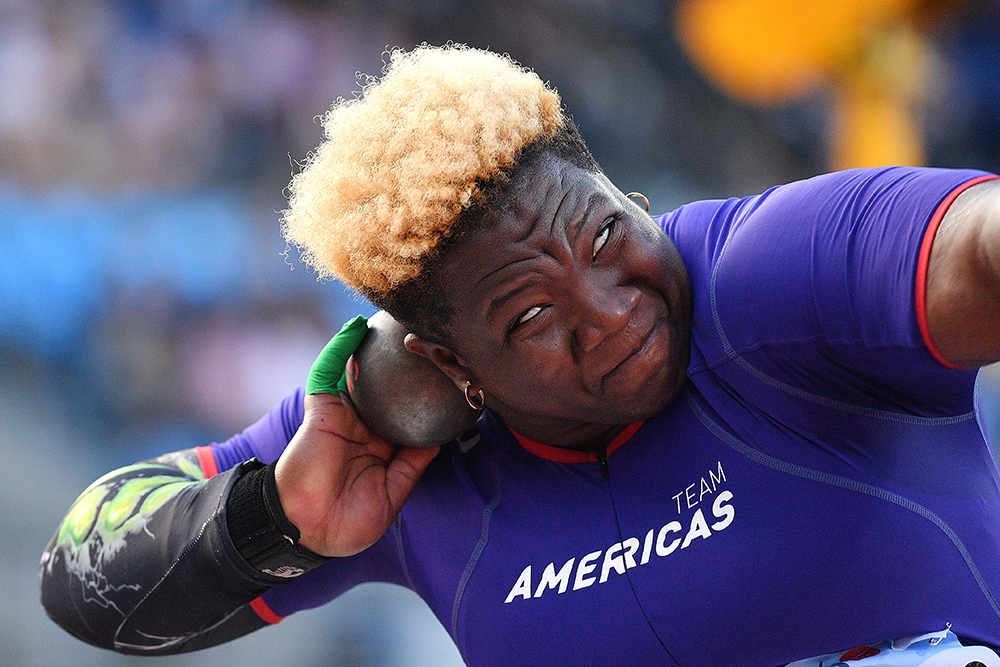
Ava Carberry (Los Angeles, California)
This is my first time at a Continental Cup—an interesting concept. I think I love the idea of the teams. It was really fun to be able to root for an athlete who I would normally be rooting against. That was something I thought was really fun and really cool. I liked the camaraderie. Things that bothered me include the elimination-factor in the distance races. In addition to not seeing the best performance, it really bothered me to see these runners fighting to make sure they would not be last. They weren’t running to be their strongest or best. And if they were running slower, they were [forced to speed up]. Runners have strategies. And there are runners who like to run from the back until a certain point and then they kick. Well, that wasn’t going to happen. Also, in the field events where you have 8 competitors, you cut the field down during the competition from 8, to 4, to 2, and finally the winner, I understand they are trying to build up excitement. But the longest put or throw is not necessarily going to be the winning throw. That happened to Raven Saunders in the women’s shot put. I understand that they are trying to build excitement for fans who don’t know the sport.
Mark Takada (Calgary, Alberta)
The Continental Cup did feature some great matchups and some great races. And that is what attracted me to it. There was some artificial nature to the concept of the track meet. I don’t like the concept of 4 continental teams. I think it would be better if it went to a format with maybe 4 or 5 countries and 3 continental teams as in the past. I think that would have been more preferable to me. And it might have meant a more competitive team situation than the format that we saw. I think that some of the aspects were kind of contrived. The things with the “Jokers” and blocking the Jokers—totally artificial and I despised that. It was hard to understand, made no sense, and I did not like it. I did not like the format for the throwing events. I thought it was terrible someone who has the 4 longest throws ended up 2nd as I think happened in one of the events. That’s just plain wrong. The person who throws the farthest should win. It was entertaining in a sort of bastardized form of track & field.
Dennis Horwitt (Old Tappan, New Jersey)
The thing I liked the most was that it moved along at a quick pace. There wasn’t a lot of dead time. I’m somewhat of a traditionalist. I prefer 6 rounds in the field events. I like to see the winning toss or jump to win. I don’t like someone’s series wasted because they lost on the throws taken in the last round. The elimination aspect of the distance events was fun to watch. I guess if you’re not a hardcore fan you liked the periodic surges. I was OK with that. I’m not sure it changed the outcome in any material way. I thought the Joker was fun. But I think it would have been better if they had had a real U.S. team, a real British team.
Tony Eltringham (Walnut Creek, California)
The thing that struck me about this meet was that the rest of the crowd really got into the competition when there were points appearing on the scoreboard all the time. We understood that there was a competition going on. Perhaps the only disappointing thing was that even some members of our own tour group couldn’t explain after Day 1 how the scoring worked and yet it wasn’t for lack of trying. If track & field doesn’t start looking at how to attract people to observe and embrace the excitement of this sport, then I don’t know how track & field athletes are going to make a living. In our own country, where are they going to make any money after the middle of June? I think we need to be supporting any attempt that puts athletes on the track where they can get paid. The good thing about this is that, regardless of the scoring, it turns out that even in the field events where they were throwing and jumping for distance, they still got paid according to the distance that they achieved. So all the hue and cry that went on back home on our message boards probably wasn’t quite as valid if in fact people were recognized for the distance they threw or jumped regardless of the artificial degree of qualifying for the semis and the final.
I thought emotions were very high on why it shouldn’t work, wouldn’t work, and couldn’t work, and it’s not what track & field is all about. I’m saying track & field of the future will not be what it’s been in the past because there are not that many families that are going to sit through 8 to 10 hours of track & field in a day. I think we are trying stuff. And I’m willing to give it more than a go. This was an attempt to put our sport—field events in particular—in a better light. They warmed up for 20 minutes; they had 3 qualifying throws in which they could get their rhythm together, and then they were to produce a distance with some degree of reliability such that they don’t foul. I don’t think we are asking anything too difficult. A good athlete will be able to meet it. A poor athlete who might be a bit ‘spikey’ will win some and lose some. I think we are encouraging a slightly different form of athlete in which they will try to be consistent rather than hope that their irregularities will be offset by a peak performance.
If we want to make track & field easy for other people to understand, running a 5-ring circus is not the way to do it. And we’ve been doing this since time immemorial. The announcers were very quick to point this out in the final of the shot put, the final 2 throw. And we all watched the shot put, switching our focus after we had been watching the final of the javelin. That focus is normally missing unless you have an emotional link with one of the athletes. This is one of those things where the World Indoors do their best to draw more than they normally do. This is an attempt to carry on as they do in the World Indoors where things stop for a while so you can watch a final. So I think there are some good things we can think upon and keep emphasizing because we can’t keep ignoring it.
Lee Chafee (Galax, Virginia)
It was great fun and I enjoyed it. I enjoyed the difference. I really enjoyed seeing some of the spectacular marks. We saw The Americas’ DeAnna Price win the women’s hammer throw right at the end—one-on-one against Anita Włodarczyk—and that was truly special. Having the children there [wearing the colors of the various continental teams] was wonderful. I saw the Smurfs in Belgium. I didn’t need to see another Smurf here. That was an embarrassment. We need real athletes, not jokes. And as much as I would have liked to have seen the throwers doing a little more, the one-on-one was really good. The special rules eventually became clear. I had fun.
Dave Daniels (Houston, Texas)
I liked the elimination aspect of the distance races. I felt that they needed to raise the meet up. The thing I didn’t like about it was that you could have the best throw in the earlier rounds, but in the fifth and final round with just 2 athletes, you could lose even if you had a further throw in an earlier round. I liked the entertainment part of the meet; I wouldn’t make any changes there. As for making the event better, you’ve got to keep tweaking it and twanging it and whatever until you get it right. But you’re not going to please everybody no matter what you do.
